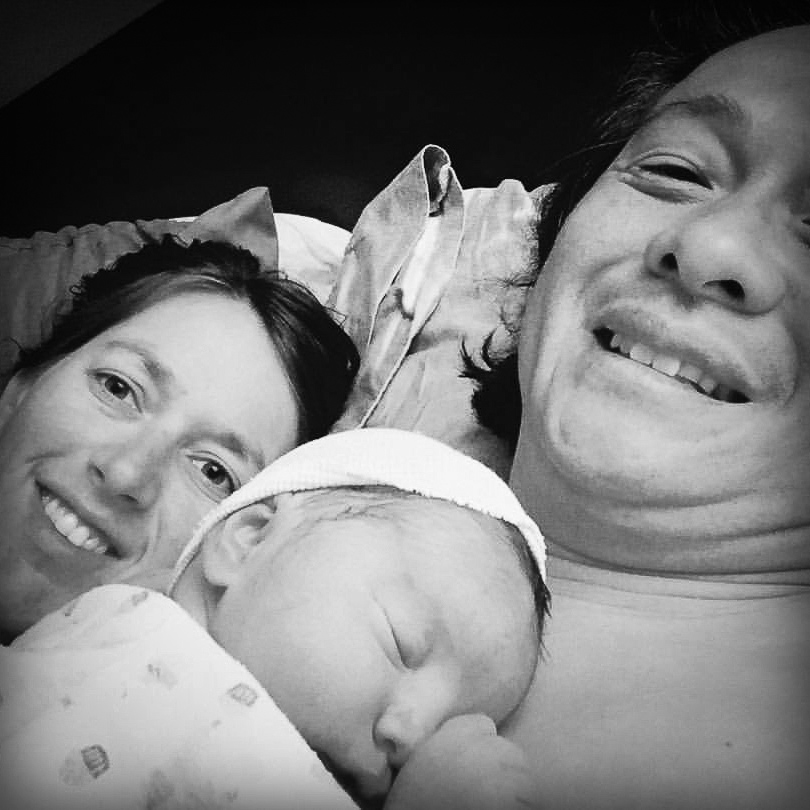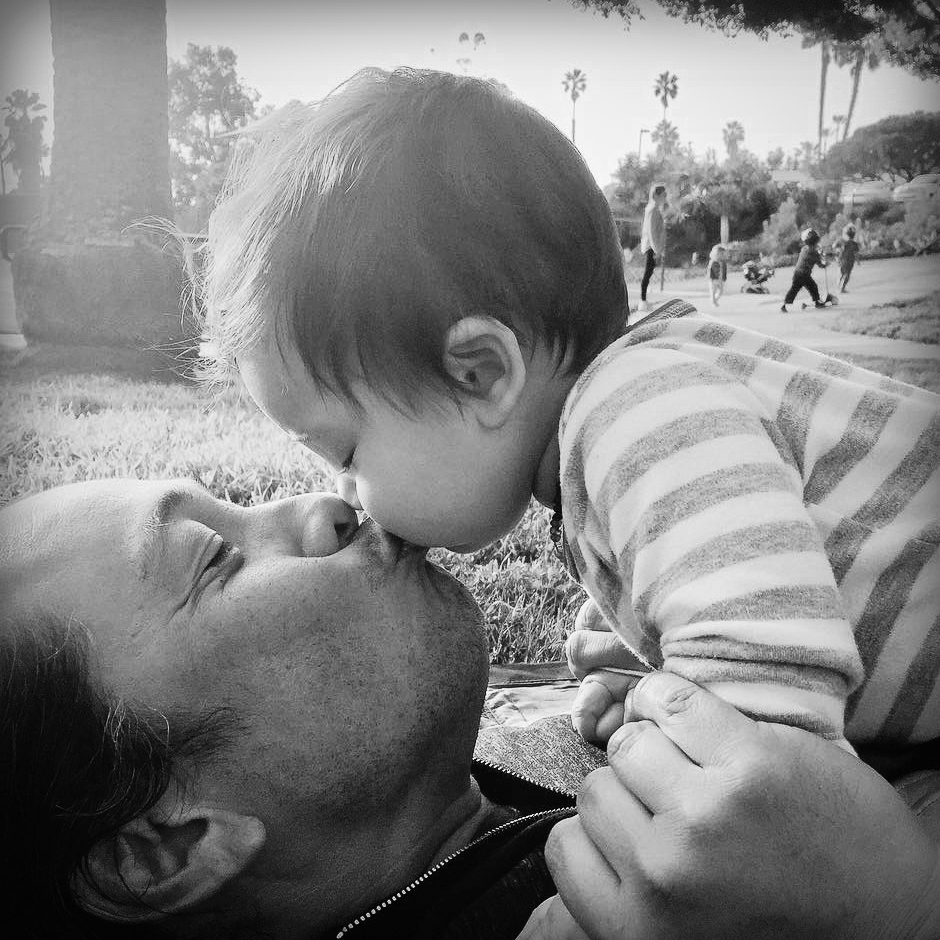“The first 1,000 days of life – the time between conception and baby’s 2nd birthday – is a unique window of opportunity when physical, emotional and psychological development across the lifespan is established.”
– UNICEF.org

Pre-Conception
We believe that bringing a new life into this world is a sacred act and should be planned for consciously. There are several ways to prepare your minds, bodies and spirits prior to conception. First, we recommend resolving any mental blocks or stresses between you and your partner, such as childhood trauma, marital tension, or financial challenges. Second, we recommending curbing your intake of anything that may impact your ability to conceive a child, such as alcohol, caffeine, nicotine and any unhealthy foods. Third, we recommend welcoming the spirit of your child-to-be fully in your thoughts and in your feelings. To help welcome our first child, we found a song that we both felt helped us visualize and connect to him, and created a GroovaRoo dance to welcome him to us with intention and love. As a couple, we often revisited this dance during our pregnancy, labor and as a first dance with him as a newborn.
Pregnancy
Everything you think and feel during your 9 months of pregnancy has a direct impact on your baby in utero. During the first trimester, there are major fluctuations in a woman’s hormone levels and a dramatic increase in blood volume to support the growing baby. This is a great time to practice self-care and do things with your partner that relieve stress and make you feel good, such as walking, singing or dancing together. During the second trimester, your body makes room to accommodate your growing baby and you may feel your baby’s first movements. This is a wonderful time to connect with your baby through prenatal dance, as they are developing and experiencing life right along with you. During the third trimester, the baby’s nervous system has developed, and you and your partner can interact directly with baby through “prenatal stimulation” such as tapping on your belly, singing to your baby, and dancing with your baby. This is also an optimal time to reach out and connect with fellow pregnant mothers and their partners. In our GroovaRoo Prenatal Classes, we bring expectant parents together to move, bond and love through the vehicle of family dance. It’s been our experience that the personal connections you make during pregnancy can last for the rest of your life.


Labor & Birth
As birth approaches, you are rightfully focused on preparing for the arrival of baby, but are you also mentally and physically prepared for the process of labor itself? Our mentor and doula, Linda Goldsmith, once told us, “Going through labor is like running a marathon”. Just as you need to train and prepare your body for a marathon, you similarly need to train and prepare your body for labor and birth. In our GroovaRoo Prenatal Dance classes, we practice movements that will help strengthen your core and open up the pelvic girdle, giving you an powerful, natural coping technique to use during labor. Whether it is repeating your favorite hip movement or dancing an entire GroovaRoo routine to a song that moves you, dancing during your labor or perinatal dance is a great way to reduce your physical discomfort, help baby move down into an optimal birth position, and stimulate the production of endorphins to reduce pain and oxytocin to regulate uterine contractions as your labor progresses.
Newborn
The transition from the consistent warmth of the womb to vacillating environment of the outer world can be very jarring for your vulnerable newborn. By doing your best to recreate your newborn baby’s experience in utero (the “continuum concept”), you can help foster a greater feeling of safety and relaxation for your baby. How do we do that? It’s simple. Keep. Them. Close. Whether you hold your baby in arms or wear your baby in a wrap or carrier, by keeping baby close, you facilitate bonding with baby through eye contact, vocal cues, skin-to-skin warmth, heart-to-heart connection, and synchronized, rhythmic movements. This bonding practice can be done by the mother, father or any consistent caregiver. Most hospitals today adopt the accepted practice of Kangaroo Care for preemies. Babywearing is an natural extension of this, strengthening attunement between you and baby. When dancing with your newborn, it’s important to keep your movements simple, gentle and relaxed, focusing more on your presence and your connection than choreography. As we like to say in our GroovaRoo classes, “Your baby doesn’t care how you dance, just how you FEEL when you dance”. Be calm and peaceful when you dance, and in turn, your baby will also feel calm and peaceful.


Infant
As your baby develops and grows as an infant, so does her/his social, language and motor skills. You, as the caregiver, can help in the development and growth of these skills, along with the proper development of the infant’s spine and hips, through babywearing dance. Dancing with your baby has many important benefits for baby such as improved muscle tone, increased bone density, enhanced spatial awareness and needed discharge of excess energy that cannot release prior to crawling. Socially, your infant has the opportunity to interact other caregivers as well as observe your interactions with other babies and caregivers, cultivating a deep sense of “family” and social bonding that last long beyond her/his GroovaRoo babywearing dance days.
Toddler
Once your child reaches toddlerhood, she/he won’t want to stay in the carrier for the whole class. Your toddler has a natural desire to walk, talk and play with the other babies and adults around them. So in our GroovaRoo Toddler classes, we try to incorporate a blend of on-the-body babywearing dancing with off-the-body toddler-adult dancing. After Year One, your toddler has enough head and neck control that you can dance more exuberantly with baby in carrier, and even sing along with baby when you dance. We found that most babies who have come to our classes for at least 6 months can tone and sing along with our GroovaRoo songs. At this stage, toddlers are able to identify the songs they have been groovin’ to and begin to mimic the dance movements purely from observing caregivers dance in class. We believe the natural way to learn dance is from watching your family and their peers social dance as a regular part of community life, just as it’s still done in villages throughout the Caribbean, South America, Africa, East Asia and Eastern Europe. Our bigger mission is to “normalize family dancing” and bring back social singing and dancing into the everyday lives of families around the world. What better way to do this than by using community song and dance as way to bond with your family from the start…creating connection from conception through movement for the whole family.

Ready to try a class?
